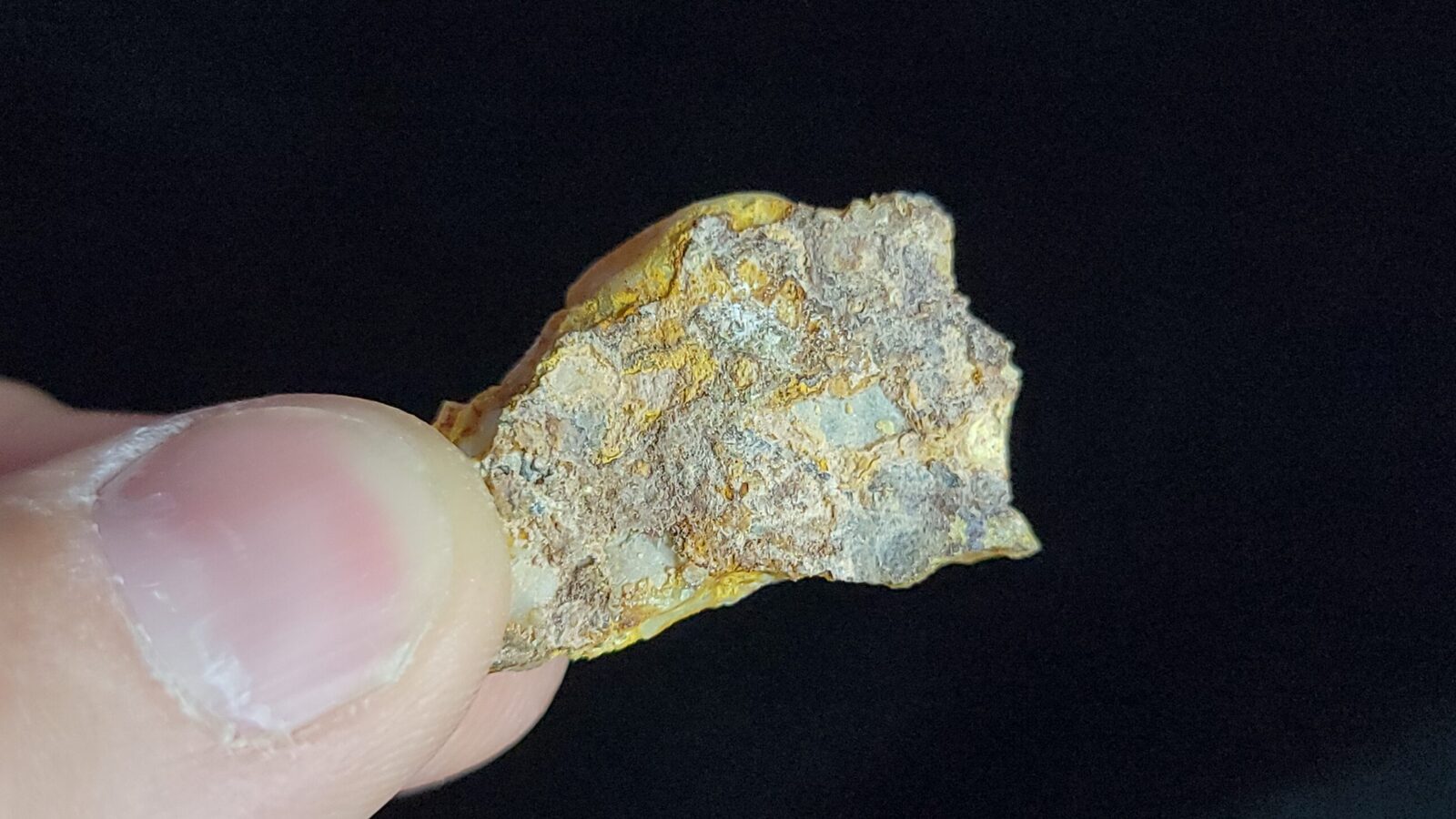
What is Beudantite? Beudantite is a rare mineral that belongs to the alunite group. It typically forms in oxidized zones of lead and arsenic-rich hydrothermal deposits. This mineral is known for its striking green, brown, or yellow hues, which make it a favorite among collectors. Where can you find Beudantite? You can find it in various locations worldwide, including the United States, Mexico, Germany, and Australia. Why is Beudantite important? Its unique composition and crystal structure make it valuable for scientific research, particularly in understanding mineral formation processes. How is Beudantite used? While not commonly used in commercial applications, it holds significance in mineralogical studies and as a collector's item.
Key Takeaways:
- Beudantite is a rare mineral with unique properties, often found in lead-zinc deposits. It has a striking appearance and is highly valued by collectors and researchers.
- Beudantite's formation conditions and chemical composition are subjects of ongoing research, contributing to our understanding of mineralogy and geological processes. It's important to handle this mineral with care due to its arsenic content.
What is Beudantite?
Beudantite is a rare mineral that belongs to the alunite group. It is known for its unique properties and striking appearance. Here are some fascinating facts about this intriguing mineral.
-
Beudantite was first discovered in 1826 by French mineralogist François Sulpice Beudant, after whom it is named.
-
This mineral typically forms in oxidized zones of lead-zinc deposits, often found in arid regions.
-
Beudantite has a chemical formula of PbFe3(AsO4)(SO4)(OH)6, which includes lead, iron, arsenic, and sulfate.
-
The mineral is usually found in colors ranging from dark green to brownish-black, sometimes appearing almost black.
-
Beudantite crystals are typically small, often forming in tiny, well-defined hexagonal shapes.
Physical Properties of Beudantite
Understanding the physical properties of beudantite can help in identifying and studying this mineral. Here are some key characteristics.
-
Beudantite has a Mohs hardness of 3.5 to 4, making it relatively soft compared to other minerals.
-
The mineral has a specific gravity of 4.1 to 4.2, indicating it is quite dense.
-
Beudantite exhibits a vitreous to resinous luster, giving it a shiny appearance.
-
It has a brittle tenacity, meaning it can easily break or crumble under pressure.
-
The streak of beudantite, which is the color of its powdered form, is typically yellowish-brown.
Occurrence and Locations
Beudantite is not commonly found everywhere. Its occurrence is limited to specific geological settings. Here are some notable locations where beudantite has been discovered.
-
One of the most famous locations for beudantite is the Tsumeb Mine in Namibia, known for its rich mineral diversity.
-
The Tintic District in Utah, USA, is another significant site where beudantite specimens have been found.
-
In Europe, beudantite has been discovered in the Lavrion District of Greece, an area with a long history of mining.
-
The Cap Garonne Mine in France is also known for producing high-quality beudantite crystals.
-
Beudantite has been found in the Atacama Desert in Chile, a region famous for its mineral wealth.
Uses and Applications
Although beudantite is not widely used in commercial applications, it holds value for collectors and researchers. Here are some of its uses.
-
Beudantite is highly prized by mineral collectors due to its rarity and unique crystal formations.
-
The mineral is often studied by geologists and mineralogists to understand the conditions under which it forms.
-
Beudantite can be used as an indicator mineral in mining exploration to identify potential lead-zinc deposits.
-
Some specimens of beudantite are used in educational settings to teach students about mineralogy and crystallography.
-
Despite its limited practical applications, beudantite's aesthetic appeal makes it a popular addition to mineral displays and collections.
Interesting Facts
Beudantite has some unique and interesting aspects that make it stand out among other minerals. Here are a few more intriguing facts.
-
Beudantite often forms in association with other minerals such as cerussite, anglesite, and mimetite.
-
The mineral can sometimes be found as pseudomorphs, where it replaces another mineral while retaining the original mineral's shape.
-
Beudantite is part of the alunite supergroup, which includes other minerals like jarosite and plumbojarosite.
-
The presence of arsenic in beudantite's composition makes it a mineral that should be handled with care.
-
Beudantite's unique crystal structure is hexagonal, belonging to the trigonal crystal system.
Beudantite in Popular Culture
While not as famous as some other minerals, beudantite has made its mark in certain niche areas. Here are some examples.
-
Beudantite has been featured in various mineralogical publications and journals, highlighting its significance in the field.
-
Some museums around the world have beudantite specimens on display, showcasing its beauty and rarity.
-
Beudantite has been included in several mineral identification guides and textbooks.
-
The mineral has been the subject of various scientific studies, contributing to our understanding of mineral formation and geology.
-
Beudantite is sometimes featured in online mineral auctions, where collectors can bid on rare specimens.
Preservation and Care
Proper care and preservation of beudantite specimens are essential to maintain their beauty and integrity. Here are some tips.
-
Beudantite should be stored in a dry environment to prevent any potential damage from moisture.
-
Handling beudantite with gloves is recommended to avoid transferring oils and dirt from your hands to the mineral.
-
Keeping beudantite away from direct sunlight can help preserve its color and luster.
-
Using a soft brush to clean beudantite can prevent scratching or damaging the mineral's surface.
-
Displaying beudantite in a protective case can help safeguard it from accidental damage.
Beudantite in Research
Beudantite continues to be a subject of interest for researchers and scientists. Here are some areas of ongoing research.
-
Studies on beudantite's formation conditions help geologists understand the processes that lead to the creation of lead-zinc deposits.
-
Research on beudantite's crystal structure contributes to the broader field of crystallography and mineralogy.
-
Investigations into the mineral's chemical composition provide insights into the behavior of arsenic and sulfate in geological environments.
-
Beudantite is sometimes used in environmental studies to understand the mobility and impact of arsenic in mining areas.
-
Ongoing research on beudantite helps improve methods for identifying and extracting valuable minerals from ore deposits.
The Final Word on Beudantite
Beudantite is a fascinating mineral with a rich history and unique properties. Found in various parts of the world, it’s known for its striking colors and crystal formations. This mineral has intrigued scientists and collectors alike due to its complex chemical composition and rarity. Whether you’re a geology enthusiast or just curious about the natural world, beudantite offers a glimpse into the Earth’s incredible diversity. Its presence in different geological environments highlights the dynamic processes that shape our planet. So next time you come across a piece of beudantite, take a moment to appreciate its beauty and the story it tells about our world’s geological past. Keep exploring and learning, because the Earth has countless more secrets waiting to be uncovered.
Frequently Asked Questions
Was this page helpful?
Our commitment to delivering trustworthy and engaging content is at the heart of what we do. Each fact on our site is contributed by real users like you, bringing a wealth of diverse insights and information. To ensure the highest standards of accuracy and reliability, our dedicated editors meticulously review each submission. This process guarantees that the facts we share are not only fascinating but also credible. Trust in our commitment to quality and authenticity as you explore and learn with us.


